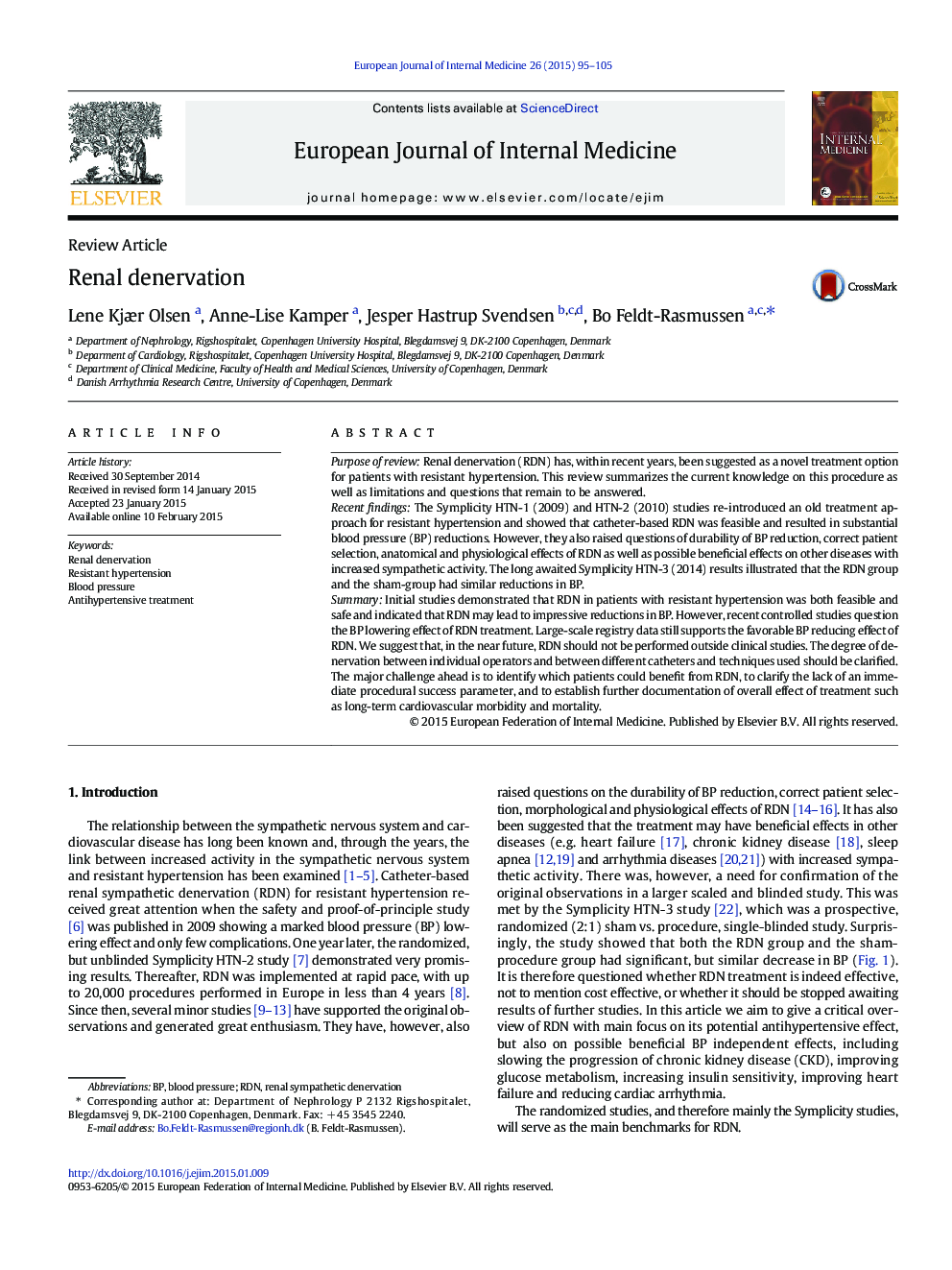| کد مقاله | کد نشریه | سال انتشار | مقاله انگلیسی | نسخه تمام متن |
|---|---|---|---|---|
| 3466423 | 1596548 | 2015 | 11 صفحه PDF | دانلود رایگان |
• Hypertension is associated with activity in sympathetic renal nerves.
• Sympathectomy was introduced to treat resistant hypertension (RH) in the 1920s.
• In 2009 renal denervation (RDN) via catheter to treat RH became available.
• RDN rapidly became a widely used treatment option, especially in Europe.
• Symplicity HTN-3 in 2014 (RDN vs. sham) from the US, questioned the effect of RDN.
Purpose of reviewRenal denervation (RDN) has, within recent years, been suggested as a novel treatment option for patients with resistant hypertension. This review summarizes the current knowledge on this procedure as well as limitations and questions that remain to be answered.Recent findingsThe Symplicity HTN-1 (2009) and HTN-2 (2010) studies re-introduced an old treatment approach for resistant hypertension and showed that catheter-based RDN was feasible and resulted in substantial blood pressure (BP) reductions. However, they also raised questions of durability of BP reduction, correct patient selection, anatomical and physiological effects of RDN as well as possible beneficial effects on other diseases with increased sympathetic activity. The long awaited Symplicity HTN-3 (2014) results illustrated that the RDN group and the sham-group had similar reductions in BP.SummaryInitial studies demonstrated that RDN in patients with resistant hypertension was both feasible and safe and indicated that RDN may lead to impressive reductions in BP. However, recent controlled studies question the BP lowering effect of RDN treatment. Large-scale registry data still supports the favorable BP reducing effect of RDN. We suggest that, in the near future, RDN should not be performed outside clinical studies. The degree of denervation between individual operators and between different catheters and techniques used should be clarified. The major challenge ahead is to identify which patients could benefit from RDN, to clarify the lack of an immediate procedural success parameter, and to establish further documentation of overall effect of treatment such as long-term cardiovascular morbidity and mortality.
Journal: European Journal of Internal Medicine - Volume 26, Issue 2, March 2015, Pages 95–105
